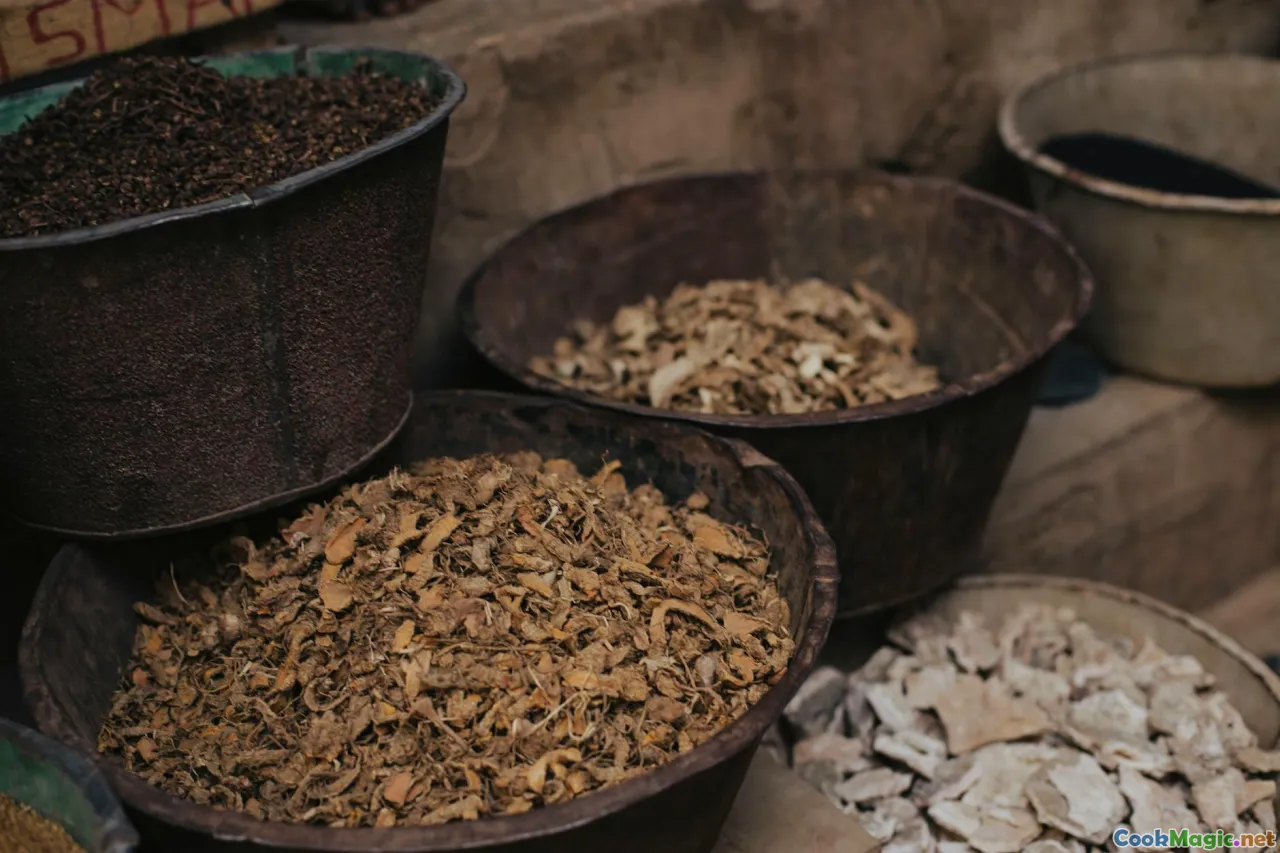The Spice Trail of Guyana
8 min read Discover the vibrant spice heritage of Guyana, exploring its rich history, aromatic ingredients, and the cultural tapestry woven through its cuisine. April 23, 2025 16:55
The Spice Trail of Guyana
Imagine walking through a lush rainforest, where the air is thick with the intoxicating aroma of exotic spices—cinnamon, allspice, pepper, and more. This is the essence of Guyana’s culinary landscape, a vibrant tapestry woven from centuries of trade, migration, and cultural exchange. Guyana's spice trail is not just a journey through flavors but a voyage through history, identity, and the soul of its people.
Introduction: The Hidden Gem of the Caribbean
Nestled on the northeastern coast of South America, Guyana often surprises visitors with its rich cultural mosaic and diverse cuisine. While known for its lush rainforests and waterfalls, few realize that Guyana’s culinary identity is deeply rooted in its spice heritage. These spices have traveled across continents—through indigenous trade routes, colonial exchanges, and modern globalization—forming the aromatic backbone of Guyanese dishes.
The Historical Tapestry of Guyana’s Spices
Indigenous Foundations
Long before European contact, the indigenous peoples of Guyana, including the Caribs and Arawaks, utilized local herbs and spices for medicinal and culinary purposes. Wild peppers, aromatic leaves, and native herbs like bixa (annatto) played a crucial role in their diets, imparting bold flavors and vibrant colors.
Colonial Influences and the Transatlantic Spice Trade
The arrival of Europeans in the 17th century marked a pivotal moment. The Dutch, British, and French established sugar plantations, introducing new spices and cultivation techniques. Allspice (Pimenta dioica), known locally as pimento, was cultivated extensively in the region, becoming a staple in both local cooking and international trade.
The African and Asian Contributions
The forced migration of Africans and the indentured laborers from India and China further enriched Guyana’s spice palette. Indian immigrants brought with them an array of fragrant spices—cumin, coriander, turmeric, cardamom—that seamlessly blended into local dishes.
Aromatic Spices: The Heartbeat of Guyanese Cuisine
Allspice (Pimenta dioica)
Often called the backbone of Guyanese cooking, allspice delivers a warm, sweet, and peppery aroma reminiscent of cinnamon, cloves, and nutmeg. It’s used in marinades, stews, and the legendary pepperpot, a hearty spiced meat stew that’s a national dish.
Cinnamon (Cinnamomum verum)
Sweet and fragrant, cinnamon elevates both sweet desserts and savory stews. Its aroma fills the air when simmered in rice puddings or infused into beverages like spiced tea.
Cloves and Nutmeg
Cloves add a pungent, warm note, often used in pickles and meat rubs, while nutmeg lends a subtle sweetness to desserts and beverages.
Hot Peppers and Chili
Guyana’s cuisine features fiery peppers like habanero and bird pepper, which lend a sharp heat that balances the richness of stews and rice dishes.
Cumin, Coriander, and Turmeric
These Indian staples are essential in curry powders and spice blends, giving depth and color to dishes like curry goat and dal.
The Culinary Journey: Iconic Dishes and Spices
Pepperpot: The Spiced Heritage Stew
A national symbol, pepperpot is a slow-cooked meat stew flavored with allspice, cassareep (a thick, sweet sauce made from cassava), and a medley of spices. Its rich aroma and complex flavors tell stories of colonial times and indigenous traditions. Traditionally served during Christmas, it embodies the warmth and resilience of Guyana’s people.
Curried Seafood and Meats
Guyana’s coastal regions thrive on seafood infused with Indian-inspired spice blends. The use of turmeric, cumin, and coriander in marinating fish or chicken results in vibrant, aromatic dishes that are both comforting and celebratory.
Pepper and Tamarind Rice
A fragrant rice dish cooked with fiery peppers, tamarind, and cinnamon, offering a perfect harmony of heat, tanginess, and sweetness.
Baked Goods and Desserts
Spices aren’t limited to savory dishes; they also define Guyanese desserts. Cassava pudding, spiced sweet bread, and ginger cookies showcase the warmth of cinnamon, nutmeg, and ginger.
Personal Reflections: The Sensory Experience
Tasting Guyanese cuisine is like embarking on a sensory adventure. The initial aroma—warm, spicy, inviting—immediately transports you. As you take a bite, the complex layering of flavors unfolds: the sweetness of cinnamon, the pungency of cloves, the fiery kick of peppers, and the earthiness of cumin.
I vividly recall visiting a family-owned spice shop in Georgetown, where jars of allspice, turmeric, and dried peppers lined the shelves. The shopkeeper, an elder gentleman with a twinkle in his eye, explained how each spice is a thread in the fabric of Guyanese life. The experience underscored how deeply food and culture intertwine in Guyana.
The Modern Spice Trail: Preserving and Innovating
Today, Guyana continues to celebrate its spice heritage while embracing modern culinary techniques. Local chefs experiment with fusion dishes, blending traditional spices with global ingredients. Spiced cocktails, infused oils, and contemporary desserts showcase the versatility of Guyana’s spice palette.
Furthermore, sustainable farming initiatives are helping preserve native spice varieties, ensuring that future generations can enjoy the full aroma and flavor of Guyana’s spice heritage.
Final Thoughts: A Flavorful Heritage
The spice trail of Guyana is more than a culinary journey; it’s a story of resilience, migration, and cultural synthesis. Every dish, every aroma, and every spice tells a story—of indigenous traditions, colonial history, and immigrant influences coalescing into a vibrant, living cuisine.
For the adventurous palate and the curious traveler, exploring Guyana’s spice heritage offers a deeper understanding of a nation’s soul. It’s an invitation to taste history, embrace diversity, and celebrate the rich tapestry that makes Guyanese cuisine truly unique.
So next time you spice up a stew or sprinkle cinnamon on a dessert, remember—you’re part of a centuries-old trail that connects continents, cultures, and stories through the universal language of flavor.









